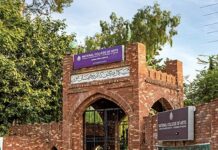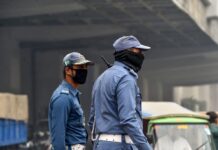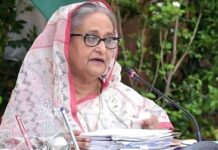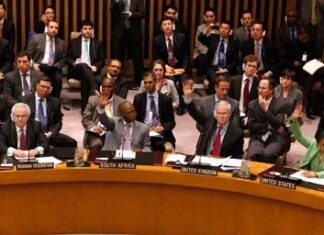Underprivileged children in societies with economic disparities often face significant challenges in accessing opportunities that could uplift their futures. These challenges range from limited access to quality education and healthcare to barriers in developing life skills and finding pathways to economic stability.
However, concerted efforts and targeted initiatives can create meaningful opportunities that empower underprivileged children and break the cycle of poverty. Skill development through vocational training programs, apprenticeships, and entrepreneurship initiatives can equip underprivileged youth with valuable skills and knowledge to secure sustainable livelihoods. Microfinance programmes can empower them economically and enable them to contribute positively to their communities.
Pakistan, with more than 250 million people, is struggling with extreme poverty. Political turbulence, unequal economic expansion, and a failing educational system characterise the socioeconomic environment. Achieving access to basic requirements and possibilities for welfare and societal progress is made extremely difficult by this complicated environment.
Economic data shows that a quarter of Pakistan’s population lives below the poverty line, with rural areas bearing a disproportionate burden due to inadequate access to essential services like education, healthcare, and infrastructure. Urban centres also face challenges such as inadequate housing and limited formal employment opportunities, contributing to stark urban-rural disparities.
Economic inequalities are pronounced, with a significant wealth gap between the affluent and the impoverished. Persistent poverty is fuelled by factors including governance issues, corruption, demographic pressures, and regional disparities in development. External shocks like natural disasters and global economic downturns further strain Pakistan’s socio-economic structure, exacerbating poverty levels.
Children constitute a substantial segment of Pakistan’s poor, facing numerous barriers that hinder their development and future prospects. Access to quality education remains a primary concern, particularly in rural areas where schools often lack basic facilities and qualified teachers. High dropout rates, especially among girls due to cultural norms and economic pressures, perpetuate cycles of poverty and constrain opportunities for upward mobility. Healthcare access is another critical issue for impoverished children, with malnutrition and preventable diseases such as polio remaining prevalent. Child labour persists due to economic necessity, further entrenching poverty by denying children educational opportunities and a nurturing environment essential for their growth.
Pakistan’s pursuit of inclusive and sustainable development goals requires persistent dedication, creative thinking, and multisectoral cooperation. Pakistan can ensure that all children have the chance to flourish and make valuable contributions to the progress of society in the future by investing in its young, especially the most marginalised ones.
Comparative analysis with other regions highlights varying approaches to poverty alleviation. Other South Asian countries like India and Bangladesh have implemented targeted policies and international collaborations, leading to significant reductions in poverty rates in some areas. However, intra-country disparities persist within these nations, reflecting uneven political commitment and resource allocation.
European nations generally boast lower poverty rates thanks to robust social welfare systems, universal healthcare, and strong education frameworks. The Middle East, with its economic diversity and geopolitical complexities, also faces poverty challenges influenced by oil economies and regional conflicts.
To uplift impoverished children in Pakistan and foster sustainable development, strategic interventions focusing on skill development are essential. Education investment is paramount, requiring improvements in access, quality, and relevance to labour market demands. Vocational training programmes tailored to local needs can enhance youth employability and income prospects, contributing significantly to poverty alleviation and economic growth. Collaborative efforts involving government, civil society, and the private sector are crucial to expanding access to healthcare and social protection.
Strengthening social safety nets can mitigate the impact of economic shocks on vulnerable families and prevent children from sliding deeper into poverty. Promoting gender equality is integral to poverty alleviation efforts, empowering girls through education and economic opportunities. Addressing cultural barriers and stereotypes that perpetuate gender disparities is essential for achieving long-term societal transformation and inclusive growth.
The training and skill development programme for poor children can be structured to ensure effective outcomes. This approach focuses on both technical and soft skills, with continuous support, mentorship, and monitoring being crucial for their long-term success and sustainability. The methodology for skill development includes assessment and needs identification, designing tailored training programmes, collaborating with educational institutions and NGOs, incorporating life skills and financial literacy, offering mentorship and guidance, arranging practical experience and internships, monitoring progress, and ensuring sustainability and scalability.
Skills critical for poverty alleviation include technical and vocational skills aligned with market demands, such as in agriculture, construction, information technology, and entrepreneurship. These skills not only enhance employability but also empower individuals to generate income, thereby breaking the cycle of poverty. Linking skill development with earnings potential is crucial. For instance, vocational training in sectors like agriculture can improve farming techniques, leading to higher crop yields and increased income for rural families.
Digital literacy is provided through training on basic computer skills, internet usage, and familiarity with digital tools that can open doors to remote work opportunities and global markets, expanding earning potential beyond local limitations. Financial literacy educates children about personal finance, savings, budgeting, and the basics of financial planning, empowering individuals to manage their finances effectively and plan for the future.
Informed by regional and international best practices, poverty in Pakistan must be addressed via comprehensive policies spanning all sectors. Giving kids the tools they need to grow into capable adults is essential because it improves their own chances while also contributing to the stability and advancement of society as a whole.
Pakistan’s pursuit of inclusive and sustainable development goals requires persistent dedication, creative thinking, and multisectoral cooperation. Pakistan can ensure that all children have the chance to flourish and make valuable contributions to the progress of society in the future by investing in its young, especially the most marginalised ones.























